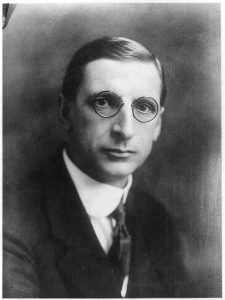Over the last three weeks I began working in earnest on the Conflict Culture database as an online intern for the Smithsonian Institute and University of Pennsylvania Museum. This internship satisfies the semester requirement for fieldwork in the field of Digital Humanities as part of the post-graduate certificate in Digital Humanities at George Mason University. Although the government shutdown delayed a bit of work at the beginning of the semester, things are now running smoothly. I was given Ireland as my assigned country for the Conflict Culture project. This project is both ambitious as well as exciting and involves collaboration from nearly twenty organizations and institutions. When asked about this project, I often paraphrase the mission as stated on the homepage:
In terms of my own progress, there are 319 sites for Ireland and the excel workbook contained previously entered data mostly related to coordinates and some other basic categories. While it may not seem difficult, the process of verifying and making minor edits to existing content has been tedious and time consuming. That said, the success of this project and the ultimate outward-facing data sets available to the public are dependent on precision and accuracy. For these reasons, I have been very careful in checking and verifying data. I am happy to report that I have nearly completed my work on the existing data for Ireland. I will then shift to researching and collecting new data to complete the documentation for each and every heritage site and site of historical and cultural significance for Ireland.
One cultural heritage site that I found interesting was the De Valera Museum and Bruree Heritage Centre, located just south of the city of Limerick.
http://visitballyhoura.com/index.php/2015/07/22/de-valera-museum-bruree-heritage-centre/
The De Valera Museum and Bruree Heritage Centre is dedicated to Eamon de Valera, former president of Ireland and one of the country’s most famous statesmen.
 This image of Eamon de Valera in 1922 is from the National Photo Company collection at the Library of Congress. There are no known copyright restrictions on the use of this work. Click here to access the image file and record.
This image of Eamon de Valera in 1922 is from the National Photo Company collection at the Library of Congress. There are no known copyright restrictions on the use of this work. Click here to access the image file and record.
Eamon de Valera’s political career spanned over half a century, from 1917 to 1973. He served several terms as the head of government and led the efforts to ratify the Constitution of Ireland.
One of de Valera’s most famous speeches was entitled “The Ireland that we dreamed of.” Click here to listen to the audio of the 1943 speech, below is an excerpt sponsored by Raidió Teilifís Éireann (RTE), Ireland’s National Public Service Broadcaster:
“…The Ireland that we dreamed of would be the home of a people who valued material wealth only as a basis for right living, of a people who, satisfied with frugal comfort, devoted their leisure to the things of the spirit – a land whose countryside would be bright with cosy homesteads, whose fields and villages would be joyous with the sounds of industry, with the romping of sturdy children, the contest of athletic youths and the laughter of happy maidens, whose fire sides would be forums for the wisdom of serene old age. The home, in short, of a people living the life that God desires that me should live…”
The museum houses a collection of his personal belongings, as well as a wide range of articles which record life in Bruree in the early twentieth century. There is also a visitor centre where Eamonn de Valera grew up. In the village of Bruree, the cottage where he lived has been preserved and the national school he attended houses another museum dedicated to his memory.
I look forward to learning more about Ireland in this process and to contributing to this very important project.
Mary Ellen Pethel, Ph.D.
Harpeth Hall School, History Dept. Chair, Digital Humanities Coordinator
Belmont University, Honors Program Adjunct, Global Leadership Studies Fellow
References:
“De Valera Museum & Bruree Heritage Centre” Visit Ballyhoura (Ballyhoura Failte: Ballyhoura County, Ireland), 2018, http://visitballyhoura.com/index.php/2015/07/22/de-valera-museum-bruree-heritage-centre/.
“Eamonn De Valera, head-and-shoulders portrait, facing front,” Library of Congress (LOC Prints and Photographs Division: Washington, D.C.), 1922, http://www.loc.gov/pictures/item/00652544/.
“The Ireland That We Dreamed Of” 1943.” Éamon de Valera (1882-1975). RTÉ Archives. March 1943.


